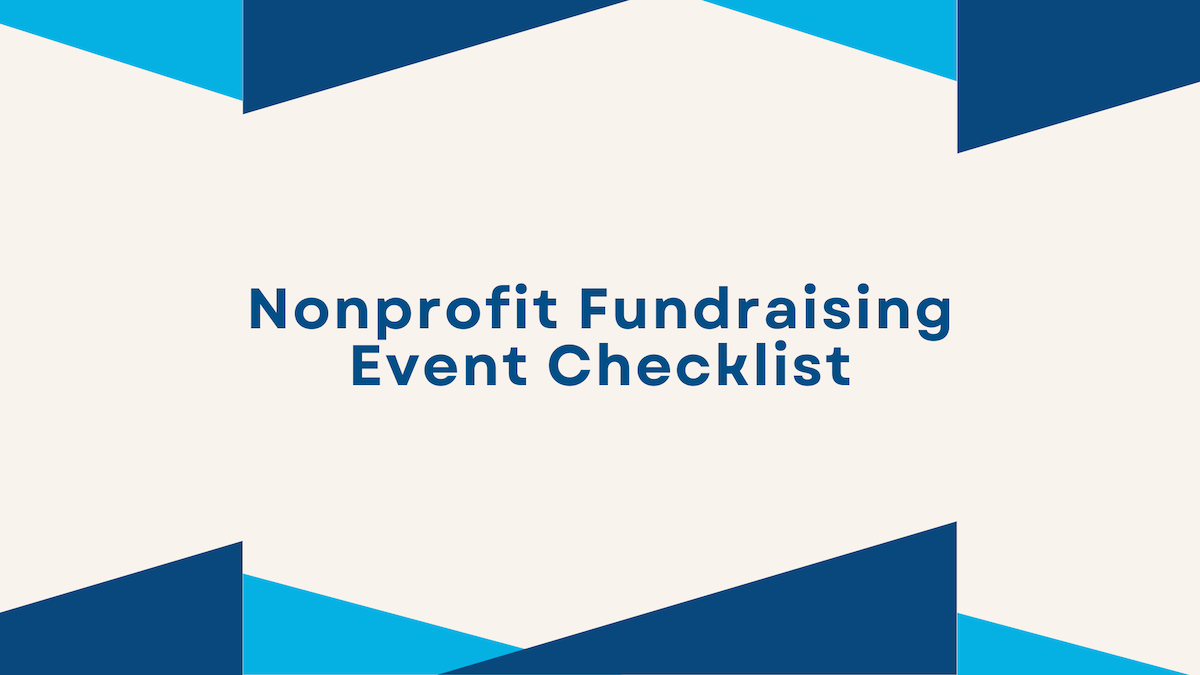Planning a nonprofit fundraising event is both rewarding and complex. From galas and auctions to walk-a-thons and virtual gatherings, each event type requires careful coordination. A comprehensive nonprofit fundraising event checklist is essential to make sure no detail is overlooked.
This step-by-step guide will walk you through the crucial planning stages to create a well-organized, impactful event that drives engagement and maximizes fundraising success.
Download Checklist
Nonprofit Resources
The Charity Charge resource hub is dedicated to providing tips, tools, and information to help your nonprofit create and grow a modern organization. Learn more
1. Define Your Event Goals and Objectives
Every successful event begins with clear goals. Setting defined objectives helps shape your event’s purpose and keeps your team focused. Your goals might include:
- Raising a specific amount of funds.
- Increasing community awareness about your cause.
- Recruiting new volunteers or donors.
Outline specific metrics for measuring success, like donation targets, ticket sales, or attendance numbers.
2. Set Your Budget and Allocate Resources
A well-planned budget is essential to keep your event financially sound. Consider expenses such as:
- Venue rental and permits
- Catering and refreshments
- Marketing materials
- Entertainment and speaker fees
- Decorations and equipment rentals
Track expenses carefully to stay within budget and identify areas where you might cut costs or allocate more funds.
3. Select a Suitable Venue
Choosing the right venue can make a huge difference in your event’s atmosphere and attendance. Consider factors like:
- Capacity and layout
- Accessibility for all guests
- Proximity to transportation and parking
- Audio-visual requirements
For virtual events, ensure you have a reliable online platform that can handle the expected audience size and allows for interaction through chat, polls, or breakout rooms.
4. Determine the Event Format and Theme
Create an engaging theme or format that aligns with your nonprofit’s mission. Options include:
- Gala dinners
- Auctions (live, silent, or online)
- Sporting events (e.g., charity runs or golf tournaments)
- Virtual webinars or streaming events
A strong theme adds personality to your event and can make marketing easier, as it helps your event stand out.
5. Develop a Sponsorship Strategy
Sponsorships can boost your event’s revenue and provide valuable resources. Reach out to businesses, local companies, or individuals who align with your cause. Create a tiered sponsorship package offering different levels of exposure based on their contribution.
In your sponsorship strategy, include:
- Benefits for sponsors (e.g., logo on materials, mentions in speeches)
- Sponsorship tiers and costs
- A clear value proposition for potential sponsors
6. Build a Detailed Timeline
Staying organized with a timeline is essential to keeping your event on track. Break down tasks by months and weeks, leading up to the event day. Include key dates for:
- Booking the venue
- Sending invitations
- Marketing and promotion
- Confirming vendors and suppliers
Adjust your timeline as necessary and assign team members to specific tasks to ensure everything is completed on schedule.
7. Promote the Event Across Multiple Channels
A robust marketing plan is crucial to driving attendance and interest. Use a mix of marketing strategies, such as:
- Social media posts and ads
- Email marketing campaigns to your supporters
- Flyers and posters for local businesses
- Partnering with influencers or media outlets
Ensure your messaging is clear and highlights the impact of the event on your cause, as well as any key attractions or guest speakers.
8. Prepare a Team and Delegate Responsibilities
A successful event requires a collaborative team. Assign clear roles to each member, including:
- Event coordinator
- Marketing lead
- Sponsorship coordinator
- Volunteer organizer
- On-site staff (for registration, setup, and logistics)
Schedule regular check-ins to stay updated on progress and address any potential issues early.
9. Plan for Donations and Payment Processing
Make it as easy as possible for attendees to donate or make purchases at your event. Consider:
- Setting up mobile donation options like text-to-give or QR codes
- Ensuring POS systems for ticket sales, raffles, or auction items
- Offering online donation links for virtual events
Clearly display donation options throughout the event to encourage giving.
10. Manage the Logistics for the Event Day
Event day logistics can make or break your guests’ experience. Ensure everything is in place by:
- Arriving early for setup
- Running final sound and A/V tests
- Setting up signage for directions and parking
- Preparing check-in stations
Have a contingency plan ready in case of unexpected issues, and assign someone as the point of contact for troubleshooting.
11. Provide Excellent Guest Experience
The impression guests have of your event will impact your nonprofit’s reputation and potential for future donations. Focus on:
- Welcoming guests with friendly, informed staff
- Creating an engaging, mission-centered program
- Offering refreshments or entertainment to keep guests comfortable
After the event, send personalized thank-you emails to attendees, emphasizing their impact and inviting them to future events.
12. Follow Up and Show Appreciation
Post-event follow-up is critical in retaining donors and building relationships. After the event, remember to:
- Send thank-you notes to sponsors, volunteers, and attendees
- Share highlights on social media and your website
- Provide an update on the event’s fundraising success
For donors, include information about the direct impact of their contributions, showing them how their support helps your mission.
13. Analyze and Report Event Outcomes
To improve future events, analyze the outcomes of this one. Review aspects like:
- Total funds raised versus the target
- Attendance numbers and engagement levels
- Sponsorship success and feedback from sponsors
- Lessons learned and areas for improvement
This evaluation can guide your team in planning even more successful events in the future.
Checklist for a Successful Nonprofit Fundraising Event
| Task | Description | Deadline |
|---|---|---|
| Define Goals and Objectives | Set fundraising and engagement targets | Start |
| Set Budget | Allocate funds for all key expenses | 1 month prior |
| Choose Venue | Book and confirm venue details | 3 months prior |
| Create Sponsorship Packages | Reach out to potential sponsors | 3 months prior |
| Market the Event | Implement a multichannel promotion plan | 2 months prior |
| Finalize Event Day Logistics | Confirm setup, registration, and AV needs | 1 week prior |
| Follow Up Post-Event | Send thank-yous and impact report | 1 week after |
Organizing a nonprofit fundraising event is no small task, but with a well-structured plan, your event can make a powerful impact. Follow this checklist to keep every detail in order, allowing you to focus on what matters most: building support for your cause.





